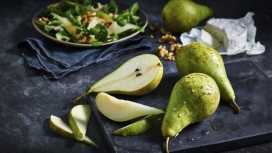Influencers are our allies: How an agency can harness influencer power

Covid-19 has turned our dining rooms into offices, shaken up our social lives and changed the way we shop. But amid these changes – where uncertainty is the only certainty – one area that has seen exponential growth is influencer marketing.
Proving to be a powerhouse during lockdown, not only does co-created content improve brand awareness and build customer loyalty – which, as consumers turn to brands they can trust, is more critical than ever – it also helps brands to reach core audiences who are stuck at home. With the number of eyes on above-the-line advertising lower than ever as we skip the commute, influencer marketing offers a viable alternative – often with a low investment.
Despite this emerging opportunity, it’s more important than ever to approach partnerships from a strategic perspective. From getting the right influencers for a brand or product on board to building a clear, cohesive brief, here are four things content marketers should bear in mind when working with influencers:
1. It's all in the brief
When piecing together an influencer campaign, the first thing you should do is map out your content goals. Is your client hoping to boost brand awareness, double their following or establish themselves as an authority within a crowded market? Once you’re clear on what your key objectives are, you can start to bring your strategy to life – from who you’ll work with to where the content will live. Every aspect of the partnership should be considered ahead of time and strategically approached to help you achieve the best ROI.
Rather than plumping for an influencer you follow, take plenty of time to think about who best resonates with the brand when you put together a list of prospective influencers. Should the campaign have one ‘hero’ influencer at its heart – someone with a huge reach who personifies the brand – or is the intention to target several sub-audiences with a handful of micro-influencers who have a highly engaged following?
Once these decisions have been made and you have a tiered approach, it’s time to put a detailed brief together. The right brief has the potential to hugely affect how an influencer project will perform and acts as a complete overview of the vision, concept, expectation, delivery – and, of course, the anticipated results.
Use this time to thoroughly map out and think about all aspects of the project. This may include, but is not limited, to:
- Deadlines – when are you expecting this content to go live? Do you want to see the content before it’s published to make sure it’s on brand?
- Timelines – for how long will these posts live on their platforms? Will there be a second push?
- Format – will it be a grid post, a reel, a story or a combination of all three?
- Engagement – are you expecting your influencer to interact with their audience after the content has been published?
- Look and feel – Will this be a lifestyle shot or a still life? Will the influencer star in the shots? Does the product need to be in full view?
Considering exactly how you want the content to look and function ahead of time will enable the influencer, brand and agency to be in the same headspace when creating the campaign. It’s better and easier to ensure everything is aligned ahead of creating content than to be forced to reshoot it or watch a campaign flop because the key stakeholders had different visions.
2. Pick the right partnerships
Although full-scale productions have been unable to take place due to social distancing measures, influencers have stepped in to fill this gap by producing unique content for brands – often at a fraction of the cost and with the potential for huge rewards. While it’s a cost-effective tactic to drive sales, it’s more important than ever that this content is created in a way that will preserve the integrity, authenticity and positioning of the brand. Our advice? Find the right influencers to work with.
To get the influencer/brand balance right, it’s important for agencies to approach influencers who tap into the right customer profiles, create engaging content that sparks conversations and drives traffic, and produce a positive ROI. A good starting point is to look at the kind of content potential creators are producing and how closely this aligns with the brand’s own channels. How does the influencer interact with the audience? Does their content feel authentic or do they partner with disparate brands and seem happy to promote anything? Have they previously worked with your competitors? Take time to look through their content history with a careful eye, to ensure it’s a good fit – both for you and for the influencer.
3. Find that sweet spot
While it can be tempting to approach an influencer with a significant following in the hope that more equals more, it’s important to focus on their niche, not the number. After all, high followers do not always equate to success.
Instead, focus on the ‘sweet spot influencer’ – the one who has an engaged following in an area that will resonate with the brand’s target audience. If, for example, an influencer is a make-up addict and regularly spends hours producing ‘full-beat’ beauty looks, their audience probably isn’t interested in the latest natural skincare brand. Instead, ensure that the content and stories of the brand and influencer align perfectly.
Not only will this mean your pitch and proposal is more likely to land successfully with their agent, but, if it feels like a natural partnership, you’re much more likely to see a conversion – whether that’s an increase in followers or brand awareness or a boost in sales. Now, more than ever, influencers who have an engaged, trusting audience are the equivalent of the advertising world’s front line, so make the most of this.
4. Give influencers creative control
Although the brief is a vital aspect of the partnership, it’s important to hand the creative control to the influencer(s). After all, you’ve picked them because of the way they engage and interact with their audience, so it’s important that anything they create should feel authentic and on-brand for them as well as for you.
A recent campaign for George, an HCA client, was focused on repositioning it as a go-to fashion retailer by providing styling inspiration and ideas for its shoppers. It wanted to become a brand that people would happy tell others they were wearing – particularly a new, younger target consumer aged between 25-44.
While we did the groundwork to find the right fit – and pinpointed ‘stylist influencers’ as the profile that perfectly combines social presence with fashion kudos – ultimately, it was down to the influencer to create the content that would best resonate with their audience.
As a stylist, vlogger and influencer, Charlotte Buttrick was identified as an expert who could up George’s style credentials. She has an engagement rate of 3% and 50k Instagram followers, so George was able to tap into her reactive audience and open up an opportunity to drive new traffic to George.com.
.png)
For this particular campaign, creating quick, educational styling content that spoke to Charlotte’s audience was key. The output on Instagram Reels slotted seamlessly into Charlotte’s own content – in terms of look, feel and style – and, over a one-month period, increased George’s Instagram reach by +10.6k, allowing them to connect with a new audience.
Yes, it’s down to the agency to do the research, find the right partners and tick the strategic thinking box, but ultimately, you have to allow the influencer enough creative freedom for it to feel authentically ‘them’.
With content creators currently bridging a gap for brands while consumers are increasingly spending time at home, influencer campaigns offer an exciting shift, but one that needs a watchful eye. Done right – with cohesive briefs, thinking and the right partnerships – influencer marketing has the power to really grow a brand authentically and tap into new audiences.


